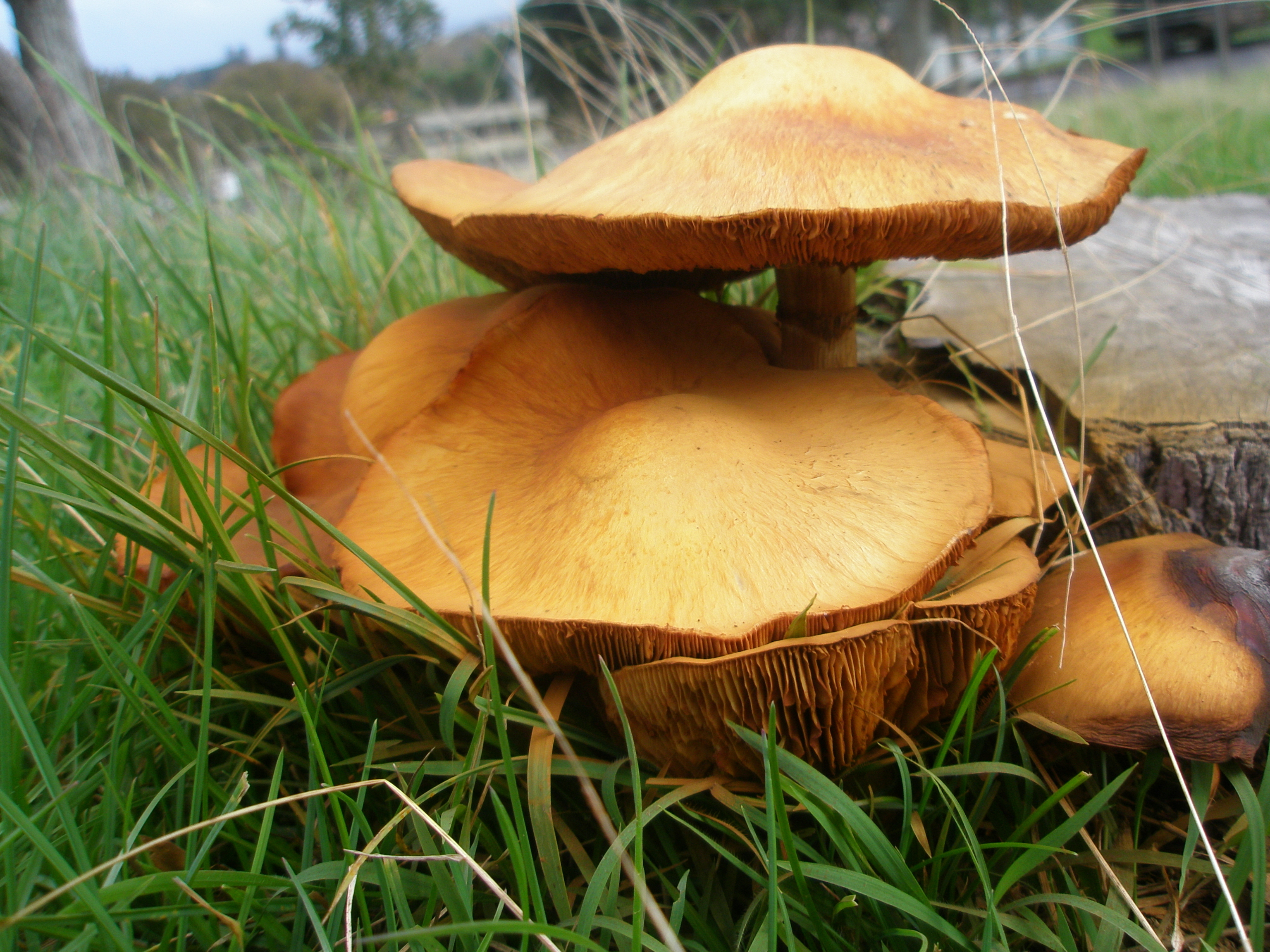Ecology
discover our cornwall park fungi
Exploring the fungi in Cornwall Park can be a fun and educational activity. With 148 species recorded, there's plenty to discover! Read on to learn more about these fascinating organisms and where they can be found in the park.
Wood Ear (Auricularia cornea)
Found throughout the year, wood ear mushrooms are a type of fungus that can be found sprouting on dead wood or the deceased parts of living trees. As a decomposer, it gradually breaks down the dead wood. The fruiting bodies of this fungus can grow up to 15-20cm in size and typically appear as a soft, floppy brown to dark grey fungus swelling or shrinking depending on the amount of water and rainfall. These are most commonly found on karaka trees in the park.
Devils Fingers (Anthurus archeri)
A peculiar and interesting fungus, devil’s fingers are a member of the stinkhorn family and can be found alongside the basalt wall on Greenlane West, near the Pōhutukawa Drive entrance to the park, where it thrives in taraire and oak leaf litter. The Tāmaki Makaurau Auckland variation of devil's fingers fungi features large arms that are deeply divided into two limbs. Its spores are located within a dark, sticky goo called 'gleba', which attracts flies and other insects due to its unpleasant odour. These insects carry the spores on their feet, resulting in their dispersal to new locations

Spectacular Rustgill (Gymnopilus junonius)
This fungus is often found on the trunk of living trees. When viewed in full sunlight, it truly lives up to its name "spectacular". The colour of the cap varies greatly, with some being a stunning gold hue, while others have a deep orange tone with small, slightly darker scales that give it a fibrous appearance. Has previously been spotted on pōhutukawa, pūriri and pine trees in the park.
Hares Foot Inkcap (Coprinopsis lagopus)
The hare's foot inkcap is a unique and fascinating mushroom species. It is easily recognisable by its small, thin, and delicate fruiting body, which is supported by a tall, slender stem. The cap is initially bell-shaped before turning into a flattened disc and then dissolving into a black, inky fluid, hence the name "inkcap." The hare's foot inkcap is commonly found growing in clusters on decaying wood, leaf litter or soil, particularly in the autumn months.

Giant Puffballs (Calvatia gigantea)
While exploring our grassy fields and meadows, you may come across the impressive puffball mushroom. As a saprobic fungus, it relies on decomposing nutrients in the soil to thrive. When young, the entire interior of the giant puffball is pure white, but it gradually transforms into a yellowish-green shade as it matures. This discolouration is due to the spores becoming mature. You may also find the puffball growing in a circular arrangement known as a "fairy ring," or even in a row. If you spot a few puffballs in a line, follow it and you may stumble upon more nearby.
When visiting the park, please be careful not to disturb or damage the fungi. Foraging in the park is not permitted.
